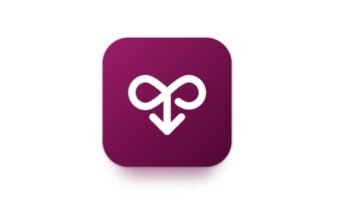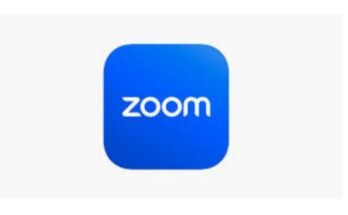Chat designes apk download
In the digital age, chat text designs play a crucial role in how effectively and efficiently we communicate online. The aesthetics and functionality of chat interfaces can significantly impact user experience and engagement. This article delves into the key elements of chat text designs, highlighting various styles and techniques that contribute to clear and appealing communication.
The Importance of Chat Text Design
Chat text design is more than just a visual element; it directly influences user interaction and satisfaction. Effective design can enhance readability, ensure accessibility, and contribute to a seamless user experience. By focusing on elements such as text layout, font choices, and color schemes, designers can create chat interfaces that are both functional and aesthetically pleasing.
1. Text Layout and Structure
A. Message Bubbles
One of the fundamental elements of chat design is the message bubble. This design feature separates individual messages visually, making conversations easier to follow. Typically, messages are displayed in rounded rectangles or ovals, with different colors or shades to distinguish between the sender and recipient. This visual separation helps users track conversation threads and respond appropriately.
B. Message Alignment
Proper alignment of messages is essential for clarity. Most chat interfaces align messages to the left for one participant and to the right for the other. This alignment helps users quickly identify who sent each message and maintains a clear flow of conversation. Ensuring consistent alignment across messages is crucial for a clean and organized chat interface.
C. Timestamp Placement
Timestamps provide context for the timing of messages, which can be critical in understanding the flow of conversation. Placing timestamps strategically, either next to or below message bubbles, helps users keep track of when specific messages were sent. It is essential to balance visibility with minimal disruption to the chat’s visual flow.
2. Font Choices and Typography
A. Font Selection
Choosing the right font is crucial for readability and user comfort. Sans-serif fonts are generally preferred for digital screens due to their clean and modern appearance. Fonts like Arial, Helvetica, and Roboto are popular choices because of their legibility and versatility. The font size should also be appropriate, ensuring that text is neither too small nor too large, thus avoiding strain on the eyes.
B. Text Weight and Style
Text weight and style can influence the emphasis and readability of messages. Bold text can be used to highlight important information or emphasize specific points, while italics may denote emphasis or distinguish quoted text. However, it is important to use these styles sparingly to avoid clutter and maintain a clean visual appearance.
C. Line Spacing and Margins
Adequate line spacing and margins contribute to a clean and readable chat interface. Proper line spacing prevents text from appearing cramped, making it easier for users to read and follow conversations. Margins around text and message bubbles help to create a visually appealing layout and ensure that messages are not too close to the edges of the screen.
3. Color Schemes and Contrast
A. Color Choice
Color schemes play a significant role in chat text design. Choosing colors that offer good contrast between text and background enhances readability. For instance, dark text on a light background or vice versa typically provides high contrast and improves legibility. Additionally, color can be used to differentiate between message types or users, adding an extra layer of clarity to conversations.
B. Thematic Consistency
Maintaining thematic consistency is crucial for creating a cohesive and visually pleasing chat interface. This involves using a consistent color palette, font styles, and message bubble designs throughout the chat application. Consistency helps users become familiar with the interface and reduces cognitive load, making interactions more intuitive and enjoyable.
C. Accessibility Considerations
Ensuring that chat text designs are accessible to all users, including those with visual impairments, is an important aspect of modern design. Using sufficient color contrast, offering text resizing options, and supporting screen readers are essential practices to make chat interfaces inclusive. By adhering to accessibility guidelines, designers can create more equitable digital communication platforms.
4. User Interaction Features
A. Emojis and Stickers
Emojis and stickers add a layer of expressiveness to chat conversations, allowing users to convey emotions and reactions that text alone might not fully capture. Proper integration of these elements into the chat interface can enhance user engagement and make conversations more dynamic. However, it is important to ensure that their use does not overwhelm the text or distract from the primary content of the messages.
B. Typing Indicators
Typing indicators, such as “User is typing…” messages, provide real-time feedback during conversations. These indicators can improve the flow of communication by letting users know that the other party is actively engaged in the conversation. This feature helps manage user expectations and reduces the likelihood of misunderstandings or miscommunications.
C. Read Receipts and Status Indicators
Read receipts and status indicators, such as “delivered” or “seen,” offer insights into the status of sent messages. These features can enhance communication by providing feedback on whether messages have been received and read. While useful, it is important to balance these features with user privacy considerations and provide options to manage their visibility.
5. Mobile vs. Desktop Chat Design
A. Mobile Optimization
Mobile chat interfaces require specific design considerations due to the smaller screen sizes and touch-based interactions. Ensuring that text is readable without excessive zooming and that interactive elements are appropriately sized for touch is crucial. Mobile chat designs should prioritize simplicity and ease of use, adapting layout elements to fit smaller screens while maintaining functionality.
B. Desktop Features
Desktop chat interfaces often offer more space for additional features and elements. Designers can incorporate more detailed layouts, including side panels or expanded message views, to enhance the user experience. However, it is essential to ensure that desktop designs remain user-friendly and do not overwhelm users with excessive information or complex layouts.
C. Responsive Design
Responsive design is key to creating a seamless chat experience across different devices. Ensuring that chat interfaces adapt to various screen sizes and orientations helps maintain consistency and usability. Responsive design practices involve using flexible layouts, scalable images, and adaptable font sizes to ensure that chat applications work effectively on both mobile and desktop platforms.
6. Privacy and Security Considerations
A. Data Encryption
Protecting user data is paramount in chat applications. Implementing end-to-end encryption ensures that messages are securely transmitted and cannot be accessed by unauthorized parties. Designers should collaborate with developers to integrate robust encryption protocols and inform users about the security measures in place.
B. Message Deletion and Editing
Providing options for users to delete or edit their messages can enhance control over their communication. These features allow users to correct mistakes or remove sensitive information. However, it is important to manage how these actions are reflected in the chat interface to avoid confusion or inconsistencies.
C. User Authentication
Implementing secure user authentication methods, such as two-factor authentication, helps protect accounts from unauthorized access. Ensuring that user accounts are secure contributes to overall privacy and enhances trust in the chat application. Designers should work with security experts to integrate authentication features effectively.
Conclusion
Effective chat text design is a blend of visual appeal, functionality, and user-centric considerations. By focusing on text layout, font choices, color schemes, user interaction features, and device-specific optimizations, designers can create chat interfaces that enhance communication and user satisfaction. As technology and user expectations evolve, staying informed about best practices and emerging trends in chat text design will ensure that chat applications remain engaging, accessible, and efficient for all users.



